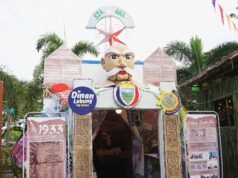Councilor Jesus “Jay” Sangil, chairman of the council’s committee on Clark economic zone, said Singapore is a prime example on how to fully develop the area without harming the environment.
Sangil clarified that the massive construction of businesses inside the CFZ is a welcome development but reminded Clark officials to regulate its effect on the environment.
Clark Development Corp. (CDC) officials as well as the Bases Conversion and Development Authority (BCDA) should and must maintain the green environment in Clark, Sangil said.
They should preserve the trees and historical sites of the freeport zone, he added.
“Hundreds of trees, as well as historical sites of Clark like the parade ground which is surrounded by decades-old trees, the picnic grounds, trees along its main roads, barn houses and similar structures should be preserved,” he said.
“If there are China town and Korean town, let us have a Fil-Am town in Clark with regulated building heights similar to several areas in California,” he pointed out.
Sangil said if Singapore was able to develop its area without harming the environment and even preserving it, why can’t we do it in Clark?
He said Clark was used by the Americans as a “botanical garden” during their time planting trees from all over the world in the area like the palm trees from Israel that lined both sides of the road leading to its main entrance as well as the various trees not indigenous to the Philippines.
Sangil said BCDA and CDC officials should also work return or revive the bike lanes and jogging paths that were destroyed or removed by past CDC administrations in the name of development.
Every modern and progressive city in the world is moving in this direction toward a greener environment now, let us do it here, he said.
Several luxurious hotels are currently undergoing construction in Clark like the Marriott, Mirej, Hilton and infrastructure development like the Capilion, Filinvest-Mimosa, Widus and Aqua Planet.




